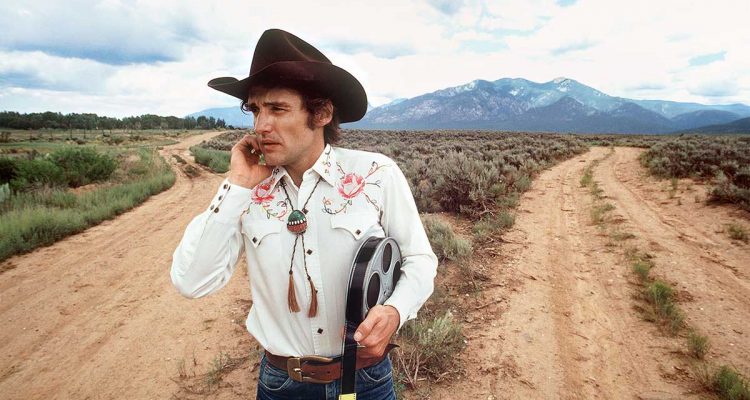Dennis Hopper was a legend. His tumultuous career — replete with soaring highs and harrowing lows — was matched only by his turbulent and unruly personal life. The director behind the prototype for American independent cinema, the classic “Easy Rider,” Hopper’s career began alongside that of James Dean, whom he shared the screen with twice, before bottoming out with his ambitious disaster “The Last Movie” when he was blackballed by the industry for his indignance and difficult attitude. His story for the next two decades was basically the same: the dizzying highs of cinematic masterpieces (“Apocalypse Now,” “Blue Velvet”) and plenty more ghastly misfires and personal woes. His life, as he lived it with passion and abandon, was an imposing story just waiting for the right documentary to piece it together. “Along For The Ride,” from director Nick Ebeling, is not that doc, for better or worse.
The primary reason that “Along For The Ride” is not the seminal film of the life of the late, great Dennis Hopper, is that the doc is, ostensibly, the story of Satya de la Manitou, Hopper’s life-long friend and right-hand man. De la Manitou first met Hopper in Taos, New Mexico after the smashing success of “Easy Rider,” which made the actor/director one of the hottest commodities in Hollywood. But rather than take the traditional studio route, Hopper accepted a cushy budget, rounded up his friends and a handful of people he’d worked with on “Easy Rider,” and headed to Peru to shoot an ambitious and rowdy meta-movie that attempted to take the industry to task (all while filming in the middle of a violent uprising, a fact lauded in the film for its rebellious spirit, despite the fact that it looks like everyone involved is an ambivalent Western conqueror).
READ MORE: The 10 Best Dennis Hopper Performances
When the crew returned stateside, Hopper sequestered himself in Taos to cut the movie, a process which quickly turned absurd, in part due to the drugs, in part due to the lawlessness everyone felt free to exhibit on Native American land, and in part due to the ego of having final cut. The story — and the resulting film, which won awards in Venice but bombed with critics and audiences at home — is an embodiment of a classic tale: fame and success toppling the ambitions of an artist who has surrounded himself by those quick to utter “genius” in hushed, admiring tones.
The rest of “Along For The Ride” essentially follows this mold. Hopper hits highs and lows and his friends and those who worked with him wax nostalgically about his talents and write off his tempers. Really, it’s all pretty absorbing, because Hopper himself is magnetic, the sort of gravitational personality who captured people in his orbit and kept them enthralled. But what “Along For The Ride” is not, is the story of Satya de la Manitou. De la Manitou is present, certainly, and guiding the proceedings and interviews, lending narration, but hardly is he any sort of subject. Which isn’t necessarily a fatal flaw, save for the fact that the film doesn’t seem to know who its subject is, especially with a title like “Along For The Ride.” There is a compelling story inside the conceit the film outwardly sets up, the story of all the right-hand men out there (or, in the case of Francis Ford Coppola, a left-hand man), all those lives usurped by the glow of fame, propping up icons and legends, but unnoticed in the warmth of their shadow. But never does “Along For The Ride” play the obvious hand it’s holding.
Instead, Ebeling’s movie sets its sights on adulatory tribute, needlessly venerating films like “The Last Movie” and generally adorning Hopper’s legacy with saintliness. And it’s easy to see why. He was, indisputably, a once-in-a-generation talent, but there’s no reason to treat such talent as divine, to treat his flaws as trite consequences of the era, or to try to elevate subpar work when there are true gems to marvel at. [C]

